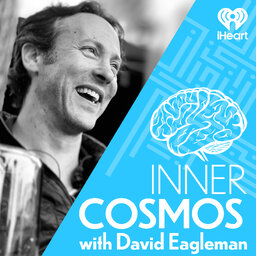Ep35 "What sticks in your brain and what doesn’t? "
f you look at a brain, how can you immediately tell if it belongs to a piano player or a violinist? How can a dog learn how to walk on its rear legs? And what does this have to do with expertise, or the good news about the brains of digital natives, or how governments respond to change just like brains do? While we all like to talk about brain plasticity, the truth is that most of what happens in your life makes no meaningful change to your brain. So what’s the difference between the stuff that sticks and the stuff that doesn’t?
 Inner Cosmos with David Eagleman
Inner Cosmos with David Eagleman


